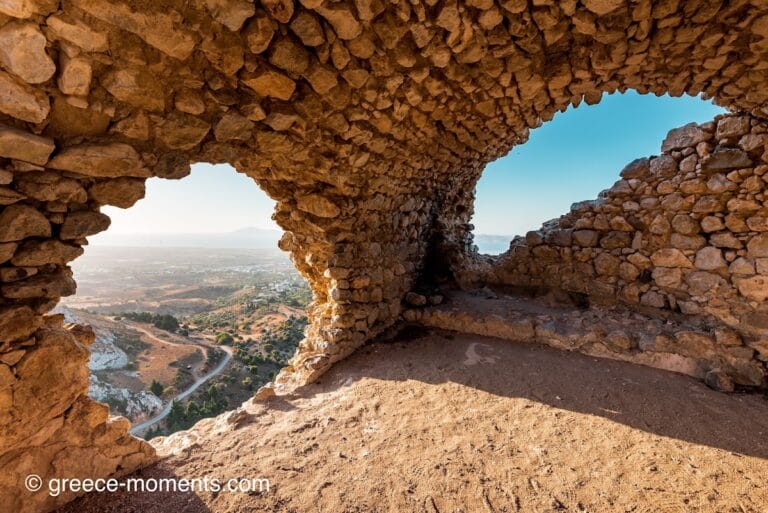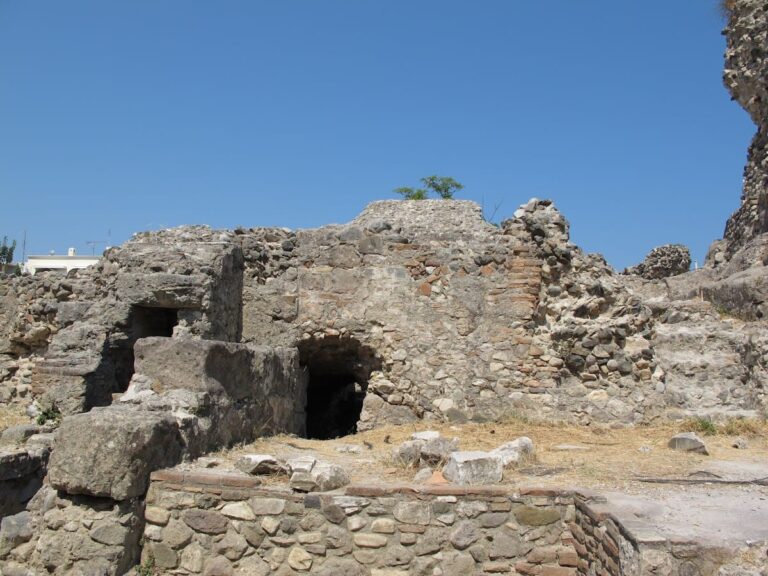Chrysocheria Castle: A 15th-Century Knights Hospitaller Fortress on Kalymnos Island
Visitor Information
Google Rating: 4.5
Popularity: Low
Google Maps: View on Google Maps
Country: Greece
Civilization: Unclassified
Remains: Military
History
Chrysocheria Castle is located on the island of Kalymnos, within the municipality of Kalymnos, Greece. This fortification was erected by the Knights Hospitaller, a medieval Christian military order, during the 15th century.
Archaeological findings reveal that the site on which the castle stands has been occupied continuously since the Neolithic era. Even before the castle’s construction, the area held spiritual significance, marked by the nearby church of Panagia Chrysocheria, dedicated to the Virgin Mary of the Golden Hands. This church was renowned for housing an icon of the Virgin Mary, distinguished by golden leaf applications on the figure’s hands, which influenced the name of the castle itself.
The castle’s construction took place around 1445, under the direction of Fantino Quirini, a knight commander acting on behalf of Jean de Lastic, the Grand Master of the Knights Hospitaller. This building project aimed to reinforce the defenses of islands under the control of the order. During construction, local residents initially resisted participation, but after legal action secured Quirini’s authority, the inhabitants were compelled to provide forced labor to complete the fortress.
Despite these efforts, the castle proved unable to withstand the attacks of Ottoman pirates and was abandoned by the middle of the 15th century. The fortress bears visible historical marks above its eastern gate, where the coats of arms of Fantino Quirini, Jean de Lastic, and Fra Juan Geltru—the governor of Kos island—are displayed, signaling the key figures connected to the castle’s active period.
Following the castle’s military decline, three windmills were erected outside its eastern walls after the year 1522. These windmills occasionally served a role in the island’s defense, linking later architectural additions to the location’s continued strategic use.
Remains
Chrysocheria Castle exhibits a rhomboid, or diamond-shaped, ground plan that includes two towers and two main gates positioned on its northern and eastern sides. Surrounding cliffs provide natural protection on all sides except the southern face, where a defensive rampart extends the fortification. This layout emphasizes both the strategic placement and the efforts made to secure the site from external threats.
Within the castle walls, the presence of various buildings can be identified. Notably, the structure incorporates parts of an ancient temple that predates the castle itself; these earlier remains were integrated into the castle’s fabric, reflecting the site’s long-standing significance. Alongside, there is a storage building and two churches, one dedicated to Saint George and the other to the Virgin Mary. Both churches retain fragments of frescoes, illustrating the religious aspects connected to the fortress and its occupants.
Outside the castle’s eastern defensive wall stand three well-preserved windmills. Constructed after 1522, these windmills are among the distinctive architectural elements tied to the castle complex. While primarily used for milling grain, historical records indicate these windmills also played occasional roles in defensive activities, linking agricultural needs with strategic considerations in the island’s history.
Together, the fortification, religious structures, and windmills form a complex that reflects layers of historical occupation, combining military, spiritual, and daily functions within a single site.










